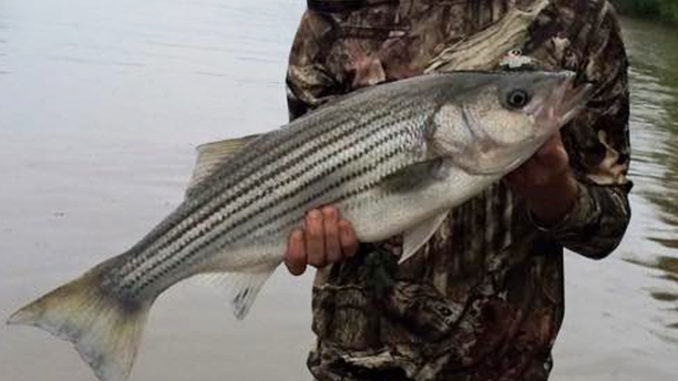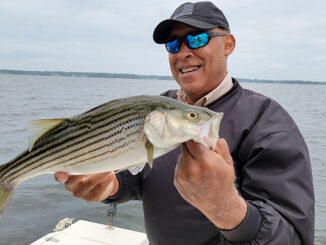
When most anglers think of the Wateree River in South Carolina, they think of catfish, but it’s also a great place for striper fishing, whether you’re casting topwater lures in the tailrace of the Lake Wateree Dam or soaking cut bait closer to the headwaters of Lake Marion.
Tyler Duncan of Sumter, S.C., fishes both areas and everywhere in between; he said this is one of his favorite times for chasing rockfish on the Wateree. He sticks to the tailrace in October, mainly because he likes topwater action. A boat ramp within sight of the dam makes it even more convenient.
“As soon as you put your boat in at that ramp, you’re in the fishing hole,” he said. “The rockfish run all the way up this river, and when they reach the base of the Lake Wateree Dam, they are basically stuck. They just swim back down a ways and right back up to the dam. They can’t go anywhere but downriver, but they will stay right at the base of the dam for weeks, and this is the time of year they really do it.”
Duncan said while the stripers are constantly feeding at the surface, you’ve got to put in your time to get them to bite.
“You can throw the same topwater lures 30 times and not get hit, but then on the next cast, it’s on, and trust me, that makes it all worth it,” he said. “Most of these fish are in the 15- to 20-pound range, and this river is so skinny, especially just below the dam, that it’s like a boxing match to get them in the boat.
“One thing you don’t want to do is cast straight across the current; your lure gets swept down too fast. But if you cast straight upriver, you’ll miss a lot of bites because you won’t feel them; the current pushes your lure faster than you can reel. You want to cast slightly upcurrent at a 45-degree angle, and you need to reel it back pretty quick.”
Duncan said walk-the-dog type lures are good when there isn’t much water being released through the dam, but when the current is really ripping, he prefers a large buzzbait because he can reel it quickly without losing any of its action.
“You want to keep it moving fast enough that it’s moving toward you more so than just drifting downriver, but you don’t necessarily need to reel so fast that you can hear the buzz over the current,” he said. “The fish hear the buzz and see the disturbance on the surface more than we can, so that’s what’s important. Just make sure it’s deliberately moving toward you.”
Duncan prefers a medium-heavy rod, a 3000 series spinning reel, 50-pound braided line, and a 30-pound monofilament leader.
“You’ve got to have a leader with some stretch. These fish hit hard and make strong runs. If you’ve got braid tied straight to the lure, something is going to break, and it’s probably going to be your rod or the hook,” he said.




